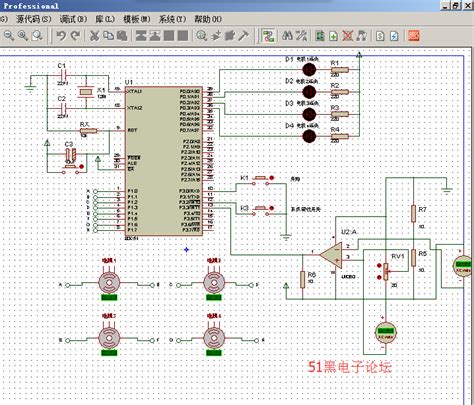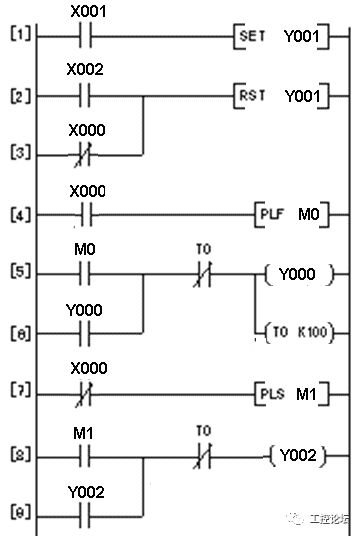Title: Exploring C51 Microcontroller Programming Software
In the realm of embedded systems, C51 microcontrollers stand as stalwart components, offering versatile functionality in various applications, from industrial automation to consumer electronics. Programming these microcontrollers requires specialized software tailored to their architecture and features. Let's delve into the realm of C51 microcontroller programming software, exploring its nuances, capabilities, and recommendations.
Understanding C51 Microcontrollers
Before delving into programming software, let's grasp the essence of C51 microcontrollers. The C51 series, developed by Intel and now widely manufactured by various vendors, are based on the 8051 architecture. These microcontrollers feature a compact yet powerful design, making them suitable for diverse embedded applications. With integrated peripherals and a robust instruction set, they offer flexibility and efficiency in executing tasks.
Features of C51 Programming Software
1.
Integrated Development Environment (IDE):
C51 programming software typically includes an IDE, providing a comprehensive environment for code development, debugging, and simulation. The IDE offers features like code editor, project management, and debugging tools to streamline the development process.
2.
Compiler and Assembler:
Efficient compilation and assembly are vital for generating machinereadable code from highlevel languages. C51 programming software incorporates compilers and assemblers optimized for the C51 architecture, ensuring code efficiency and compatibility.
3.
Debugger:
Debugging is indispensable in software development, especially in embedded systems where realtime constraints and hardware interactions add complexity. C51 programming software integrates debugging tools for stepbystep execution, variable inspection, and realtime debugging on target hardware.
4.
Simulator:
Simulation enables developers to test their code without deploying it onto physical hardware, facilitating rapid prototyping and debugging. C51 programming software often includes a simulator that emulates the behavior of the microcontroller, allowing developers to assess code logic and functionality.
5.
Peripheral Libraries:
C51 microcontrollers come with a range of integrated peripherals such as timers, UART, SPI, and I2C interfaces. Programming software may provide peripheral libraries and APIs to simplify the utilization of these peripherals, enabling rapid development of applications.
Popular C51 Programming Software
1.
Keil µVision:
Keil µVision stands out as one of the most popular choices for C51 microcontroller programming. It offers a featurerich IDE with a userfriendly interface, along with a powerful debugger and simulator. Keil provides comprehensive support for various C51 variants and peripherals, making it a preferred tool for both novice and experienced developers.
2.
IAR Embedded Workbench:
IAR Embedded Workbench is another robust toolchain for C51 microcontroller development. Known for its highperformance optimization and reliable debugging capabilities, IAR Embedded Workbench streamlines the development process while ensuring code quality and efficiency.
3.
SDCC (Small Device C Compiler):

SDCC is an opensource compiler suite that supports multiple architectures, including the C51 series. While not as featurerich as commercial solutions, SDCC offers a costeffective option for C51 development, suitable for hobbyists, educators, and smallscale projects.
4.
GNU Toolchain:
The GNU toolchain, comprising GCC (GNU Compiler Collection) and related utilities, also supports C51 microcontroller development through thirdparty extensions and plugins. While requiring more configuration and setup compared to commercial offerings, the GNU toolchain provides flexibility and customization options for advanced users.
Recommendations and Best Practices
1.
Selecting the Right Tool:
Choose a programming software that aligns with your project requirements, budget, and familiarity with the toolchain. Evaluate factors such as IDE features, debugging capabilities, and compatibility with target hardware before making a decision.
2.
Mastering the Toolchain:
Invest time in mastering the selected programming software and its associated toolchain. Familiarize yourself with the IDE functionalities, debugging techniques, and optimization options to enhance productivity and code quality.
3.
Utilizing Documentation and Resources:
Leverage the extensive documentation, tutorials, and community forums available for the chosen programming software. These resources provide valuable insights, troubleshooting tips, and best practices for efficient C51 development.
4.
Testing and Validation:
Thoroughly test and validate your code using simulation tools and, where feasible, on physical hardware. Verify the functionality, performance, and reliability of your application under different conditions to ensure robustness and compliance with project requirements.
Conclusion
C51 microcontroller programming software plays a pivotal role in unleashing the potential of these versatile embedded devices. Whether you're embarking on a new project or refining existing applications, selecting the right programming software and mastering its intricacies are essential steps towards success. By understanding the features, exploring popular tools, and adhering to best practices, developers can harness the full capabilities of C51 microcontrollers to realize innovative solutions in various domains.
Considering the comprehensive nature of C51 microcontroller programming, this exploration aims to provide a holistic view of the topic, covering essential aspects and offering actionable recommendations for developers and enthusiasts alike.
版权声明
本文仅代表作者观点,不代表百度立场。
本文系作者授权百度百家发表,未经许可,不得转载。











